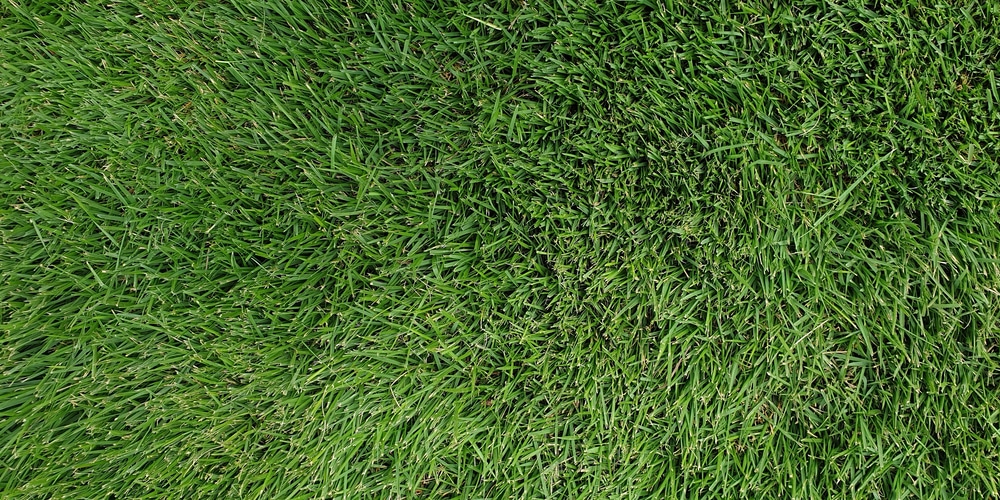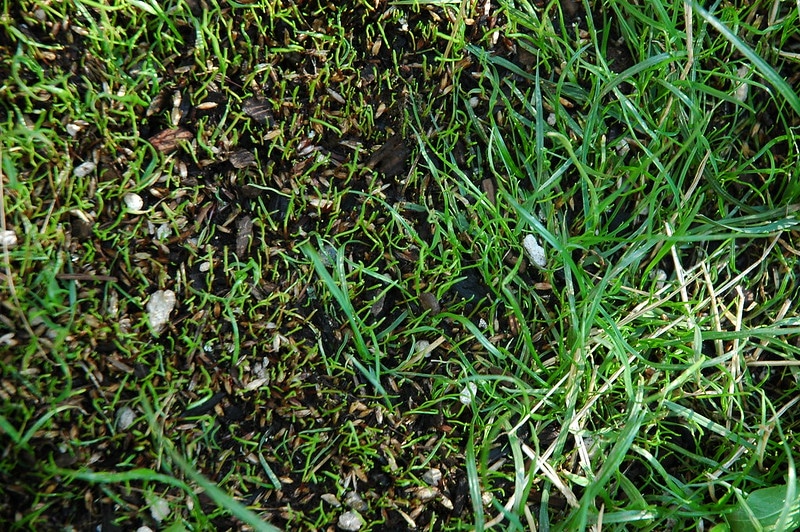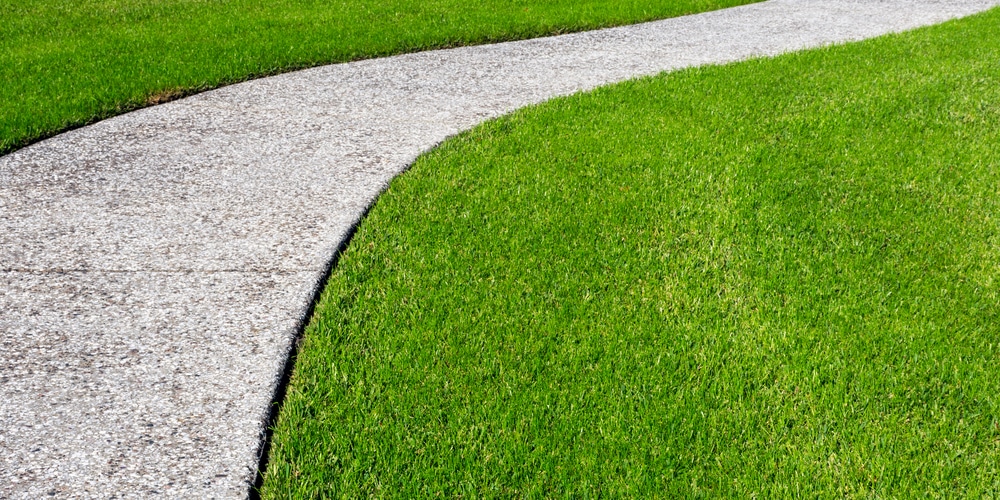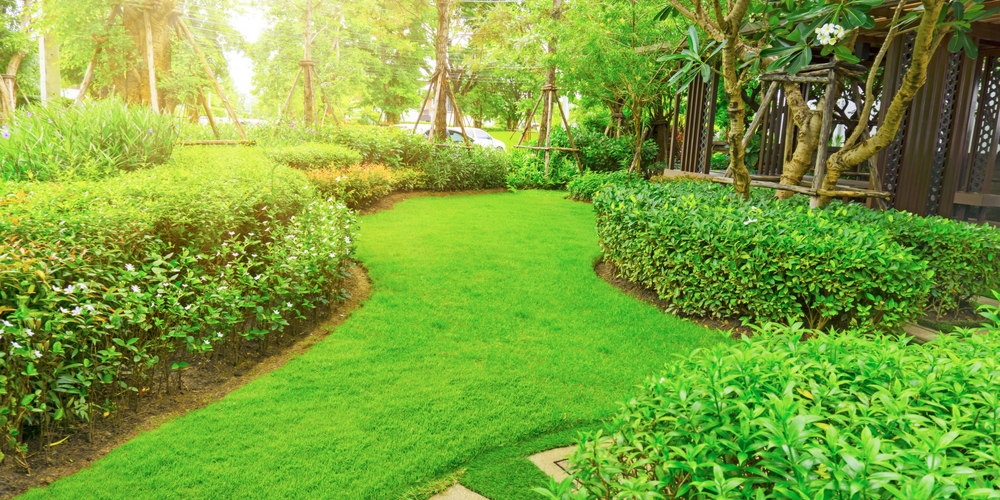Low-Maintenance Grass Seeds
When creating a low-effort lawn, low-maintenance grass seeds are a pivotal choice to ensure minimal upkeep while sustaining a lush, green appearance.
Low-maintenance grasses typically require less watering, fertilizing, and mowing than their high-maintenance counterparts.
Key Traits to Look For:
- Drought Resistance: These grasses, like Zoysia, have deep root systems, enabling them to survive on less water.
- Slow Growth Rate: Grasses such as Korean Velvet Grass grow slowly, reducing the frequency of mowing needed.
Considerations for Your Lawn:
- Climate Adaptability: Suitability to your local climate can reduce maintenance needs.
- Soil Compatibility: Some grasses, for example, are better suited for sandy soils.
- Usage: Choose grasses that can withstand the expected foot traffic in your yard.
Popular Choices Include:
- Fine Fescues: Including types like hard fescue and creeping red fescue — known for being tolerant to shade and requiring less fertilizer.
- Clovers: Can be used alone or as part of a seed mix to add nitrogen to the soil, which promotes lawn health.
Top Varieties of Low-Maintenance Grasses
For a lush lawn without the high upkeep, consider planting low-maintenance grass seeds. Each variety has unique characteristics that make them suitable for different environments and care requirements.
Fine Fescue
- Adaptability: Thrives in cooler climates with well-drained soils.
- Shade Tolerance: Excellent performance even in shaded areas.
Fine Fescue requires minimal input from you in terms of fertilization and water. It establishes quickly and brings a fine texture to your lawn.
Tall Fescue
- Heat Tolerance: Handles heat better than many cool-season grasses.
- Drought Resistance: Deep root systems support better drought tolerance.
Tall Fescue is your go-to if you desire a robust grass that can withstand some neglect. Its durability makes it ideal for high-traffic areas where you and your family enjoy outdoor activities.
Buffalo Grass
- Native Advantage: Indigenous to North American prairies.
- Maintenance: Requires less mowing compared to traditional lawns.
Buffalo Grass gives you a dense turf that is not only drought-resistant but also thrives in hot conditions. It’s perfect for creating a low-maintenance, native landscape.
Zoysia Grass

- Versatility: Excels in a variety of soil types, including sandy soils (7 Best Low-Maintenance and Drought-Resistant Grasses).
- Texture: Delivers a fine to medium blade with a soft feel underfoot.
Zoysia Grass is a slow grower, which means less mowing for you. It’s a top performer in both warm and transition zones, offering year-round greenery.
Bermuda Grass
- Growth Rate: Rapid establishment and spread.
- Height of Use: Commonly selected for sports fields and golf courses for its resilience.
For a lawn that bounces back quickly from wear and tear, Bermuda Grass is a top contender. It revels in full sun and can tolerate a lot of foot traffic, making it ideal for your active outdoor space.
Planting and Initial Care
Success with low-maintenance grass seeds starts with meticulous planting and proper initial care. Prepare your soil, utilize effective seeding techniques, and follow a regimented watering and fertilization schedule to establish a robust lawn.
Soil Preparation
- Test Your Soil: Know your soil’s pH and nutrient level for optimal growth conditions. Aim for a pH between 6.0-7.0 for most grass types, making adjustments if necessary.
- Clear & Till: Remove debris, weeds, and dead grass. Till the soil about 2-4 inches deep to alleviate compaction and allow for new seedling growth.
Seeding Techniques
- Choose the Right Time: Plant your seeds during growth-friendly seasons, generally in the fall or early spring.
- Even Distribution: Spread the seeds evenly across the prepared soil to avoid over-crowding which can impair growth.
- Soil Contact: Lightly rake the seeds into the soil or use a roller to ensure seed-to-soil contact, vital for germination.
Watering and Fertilization
- Gentle Watering: Keep the soil consistently moist but not waterlogged. Approximately 15-30 seconds of watering for small areas every 2-8 hours can be necessary depending on weather conditions.
- Fertilization: Start with a starter fertilizer that matches your soil test results to nourish and boost early growth. Follow up with regular fertilizer applications as recommended for your chosen grass species.
Ongoing Maintenance and Care
While low-maintenance grass seeds reduce the need for constant lawn care, certain practices are still vital for maintaining a healthy and attractive lawn.
Mowing Practices
- Height Adjustments: Set your mower blade to the ideal height for your grass type. For example, Zoysia grass thrives when cut to 1.5-2 inches.
- Frequency: Mow as needed, which can be less often than traditional grasses—typically only once every 1 to 3 weeks during the growing season.
Weed Control
- Pre-Emergent: Apply a pre-emergent herbicide early in the season to prevent weed seeds from germinating.
- Spot Treatment: Treat weeds spot on with a targeted herbicide or by hand-pulling to avoid widespread chemical use.
Seasonal Considerations
- Spring: Aerate your lawn to encourage rooting, which is beneficial for grasses like the Care-Free Turfgrass Mix which thrives in difficult conditions.
- Fall: Overseed if necessary to prepare for the winter, particularly with mixes like No Mow Lawn Seed Mix to maintain density and health.
Frequently Asked Questions
Seeking a low-maintenance lawn? These common inquiries guide you to select the right grass seed that fits your lifestyle and gardening preferences.
What types of grass seed are considered low-maintenance for lawns?
- Zoysia Grass: Thrives with minimal care, requiring less watering and mowing, and adapts well to a variety of soils.
- Fine Fescue: Ideal for areas with poor soil quality and requires infrequent mowing and watering.
How does Black Beauty Ultra grass seed perform in terms of maintenance?
Black Beauty Ultra grass seed is praised for its drought resistance and ability to create a lush, dark green lawn with lower maintenance demands than many other varieties.
What grass varieties are recommended for climates like Florida, California, and Texas?
- Bahia Grass: It’s a tough species suitable for Florida’s climate, with a high tolerance for heat and humidity.
- Bermuda Grass: Perfect for California and Texas, this grass thrives in warm temperatures and offers outstanding durability.
What are the best practices for overseeding a lawn with new grass seed?
- Prepare your lawn by mowing it low and removing clippings.
- Choose a high-quality overseeding grass seed mix tailored to your lawn’s conditions.
- Spread the seed evenly, and ensure soil contact.
- Water regularly until the new grass is established.
Which grass species requires the least amount of mowing?
No Mow Lawn Seed Mix is often recommended for those looking for a lawn that requires minimal mowing. It’s a blend that grows slowly and maintains a short height naturally.
What is the easiest type of grass seed to establish and grow for a beginner?
Ryegrass is typically the easiest to establish and grows quickly. It offers fast results for beginners seeking a resilient and hardy lawn.
Last update on 2025-06-06 / Affiliate links / Images from Amazon Product Advertising API





